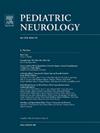Comparison of Intrauterine and Postnatal Brain Magnetic Resonance Imaging: Systematic Review
IF 3.2
3区 医学
Q2 CLINICAL NEUROLOGY
引用次数: 0
Abstract
Background
Fetal magnetic resonance imaging (MRI) identifies brain abnormalities better than transabdominal ultrasound. Most studies compare fetal MRI with postnatal cranial ultrasound or postmortem, so it is unclear how useful postnatal MRI is after fetal MRI. This work aimed to review the literature on postnatal MRI compared with fetal MRI to determine whether it provided useful clinical information.
Methods
A literature search to April 2024 was performed to identify publications on fetal brain abnormalities examined using both fetal MRI and postnatal MRI. A systematic review was performed. The quality of research was evaluated using Joanna Briggs Institute checklists.
Results
We identified 24 studies of 401 participants. All identified papers were retrospective or prospective case series at high risk of bias. Fourteen (58.3%) of the studies were high or moderate quality and 10 (41.7%) were low. Postnatal MRI confirmed the findings of fetal MRI in 296 (73.8%), refuted the diagnosis on fetal MRI in 24 (6.2%), and found additional abnormalities in 81 (20.2%). The suspected abnormalities on fetal MRI not confirmed on postnatal MRI were 12 isolated inferior cerebellar vermis hypoplasia, eight cerebellar vermis cysts, one mild ventriculomegaly, and one each of focal white matter abnormality, mega cisterna magna, and an unstated abnormality. Two papers including 17 participants reported that postnatal MRI changed the management or prognosis in nine (52.9%) participants.
Conclusions
The evidence on the value of postnatal MRI following a diagnosis of fetal brain abnormality is limited in size and quality, and further prospective research evidence is required.
宫内和产后脑磁共振成像的比较:系统综述
胎儿磁共振成像(MRI)比经腹超声更能识别大脑异常。大多数研究将胎儿MRI与产后颅脑超声或尸检进行比较,因此尚不清楚胎儿MRI之后的产后MRI有多大用处。本研究旨在回顾有关产后MRI与胎儿MRI比较的文献,以确定其是否提供有用的临床信息。方法检索到2024年4月为止的文献,以确定使用胎儿MRI和产后MRI检查胎儿脑异常的出版物。进行了系统评价。研究的质量是用乔安娜布里格斯研究所的清单来评估的。结果我们确定了24项研究,401名参与者。所有确定的论文都是具有高偏倚风险的回顾性或前瞻性病例系列。14项研究(58.3%)为高质量或中等质量,10项研究(41.7%)为低质量。产后MRI证实胎儿MRI的296例(73.8%),驳斥胎儿MRI诊断的24例(6.2%),发现额外异常的81例(20.2%)。胎儿MRI疑似异常,出生后MRI未确诊的有孤立性小脑下蚓发育不全12例,小脑蚓囊肿8例,轻度脑室肿大1例,局灶性白质异常1例,大池1例,未明确异常1例。两篇包括17名参与者的论文报道,出生后MRI改变了9名(52.9%)参与者的管理或预后。结论产后MRI诊断胎儿脑异常的证据数量和质量有限,需要进一步的前瞻性研究证据。
本文章由计算机程序翻译,如有差异,请以英文原文为准。
求助全文
约1分钟内获得全文
求助全文
来源期刊

Pediatric neurology
医学-临床神经学
CiteScore
4.80
自引率
2.60%
发文量
176
审稿时长
78 days
期刊介绍:
Pediatric Neurology publishes timely peer-reviewed clinical and research articles covering all aspects of the developing nervous system.
Pediatric Neurology features up-to-the-minute publication of the latest advances in the diagnosis, management, and treatment of pediatric neurologic disorders. The journal''s editor, E. Steve Roach, in conjunction with the team of Associate Editors, heads an internationally recognized editorial board, ensuring the most authoritative and extensive coverage of the field. Among the topics covered are: epilepsy, mitochondrial diseases, congenital malformations, chromosomopathies, peripheral neuropathies, perinatal and childhood stroke, cerebral palsy, as well as other diseases affecting the developing nervous system.
 求助内容:
求助内容: 应助结果提醒方式:
应助结果提醒方式:


